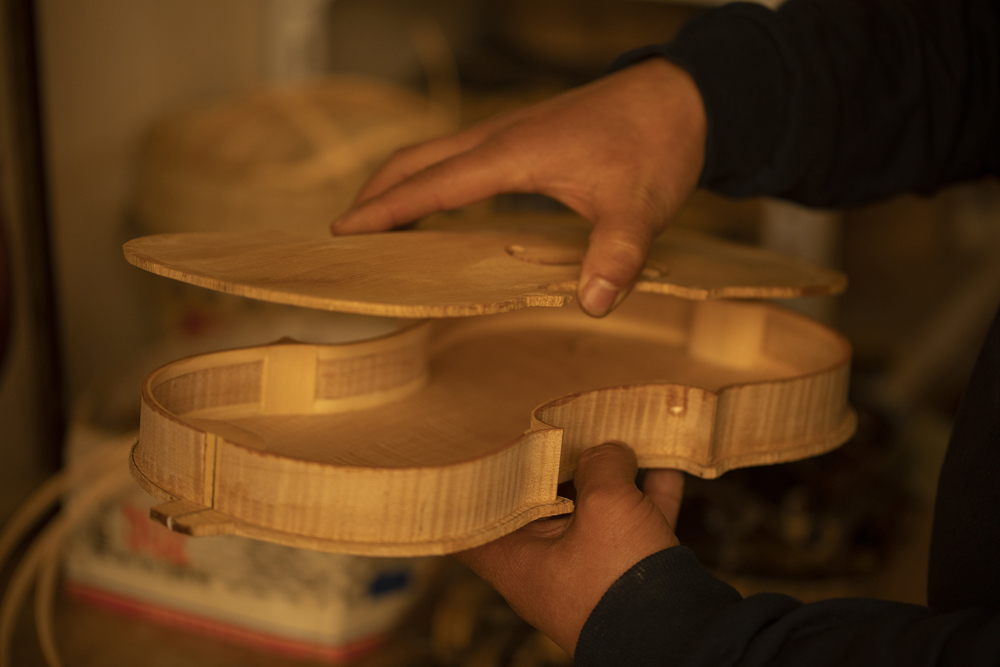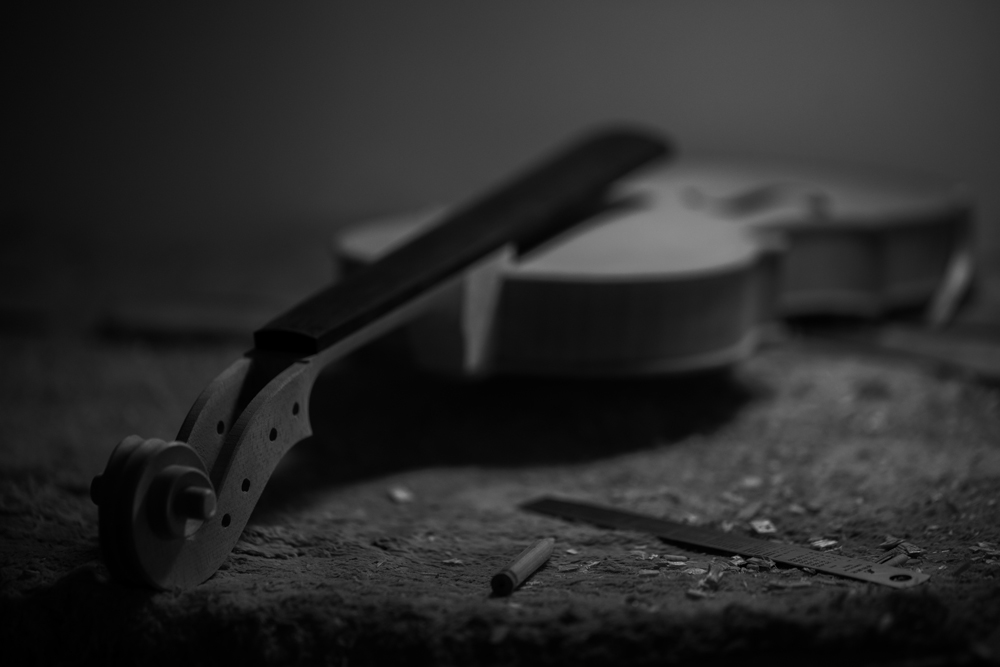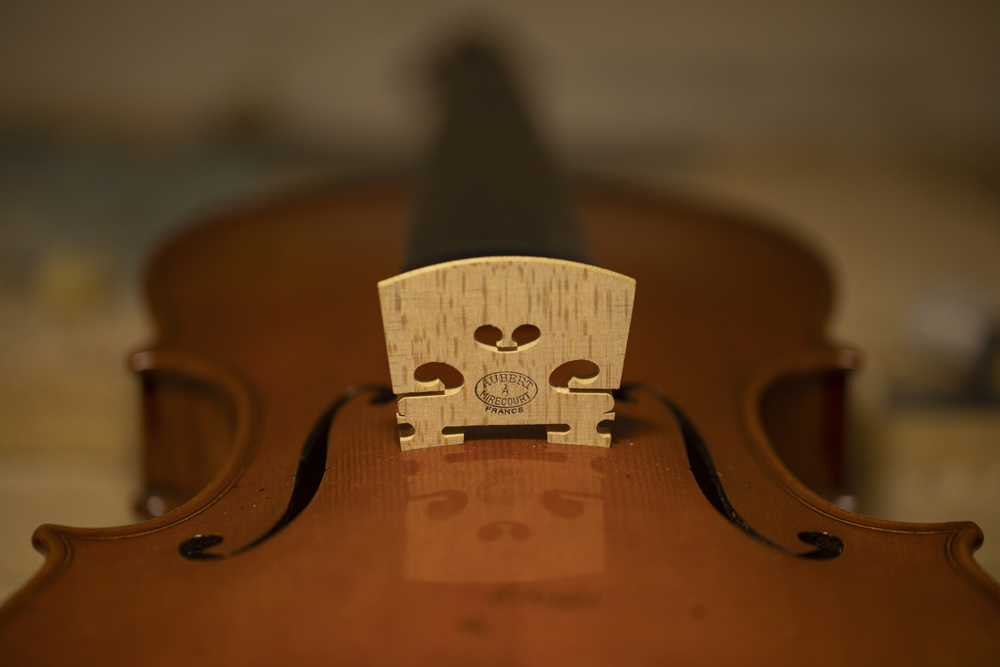Making Process
Photo Essay of Our Making Process
Following the traditional Italian method, all done by hands of experienced luthiers.
Tonewood Selection:
To select, and match proper front/spruce and back/maple, according to the character of individual tone wood. An extremely important step in violin making, as the maker must of a good sense of age, density, flexibility of the wood.
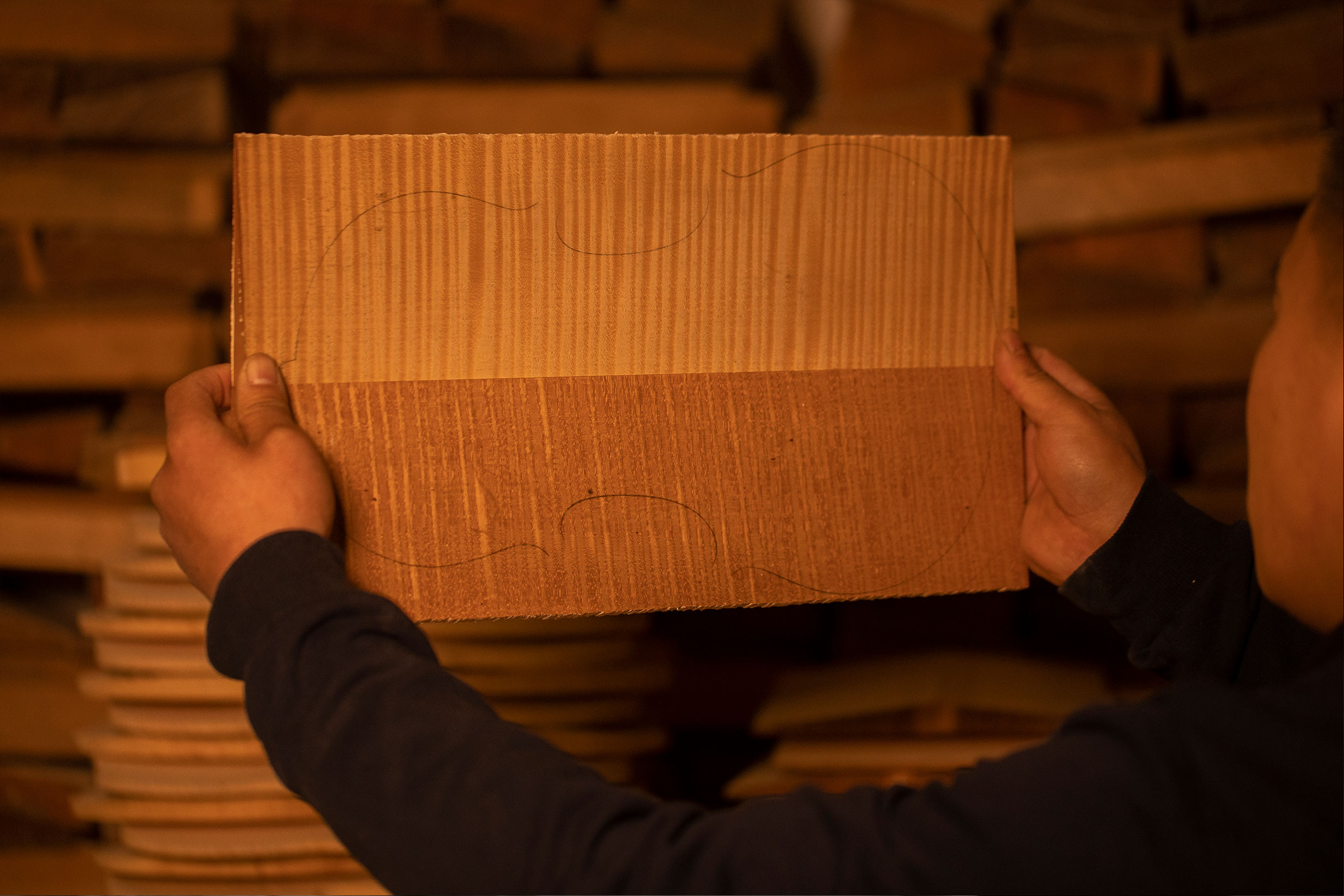

Carving:
Using all hand tools as ancient Cremonese makers, from planning the raw wood, forming the arching and the initial graduation. The maker can gain even more information on tonewood, by taking one cut at a time, along the carving process.






Graduation (thickness of the plate):
One of the most crucial step in tone production: the thickness of the plate, which varies from point to point, determining a great deal of tonal character of the instrument. By using the traditional method, the maker decide the final thickness of plate by testing its flexibility, the “sound” of the plate ( tap tone “, as well how it matches with back. Luthiers with formal training and massive experience are more suitable for this process.
Bass bar:
As the name suggests, bass bar is responsible for the bass response, as well attributing to the flexibility of the top plate. The height, curve, length, and position of the bass bar all play an important role of the overall tone production. Similar to the graduation, only well trained luthiers should be perform this process.


Ribs:
A very important process but often not made correctly, especially on massive production instruments: the proper, traditional method is to using heat and moisture, carefully bend and form the rib to shape that perfectly matching the mold of the instrument. The plate then is free to vibrate, waste no effort in holding the ribs.
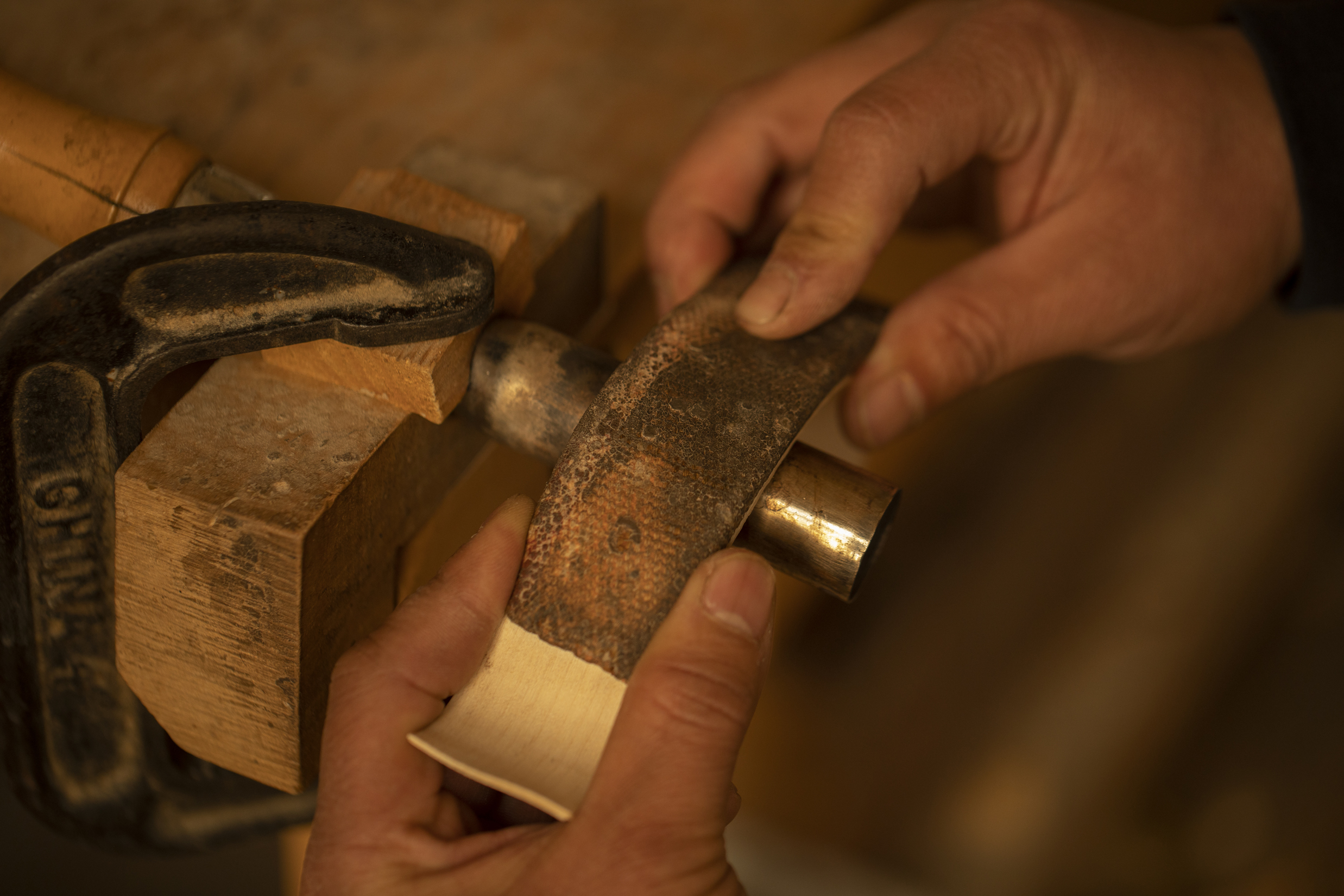
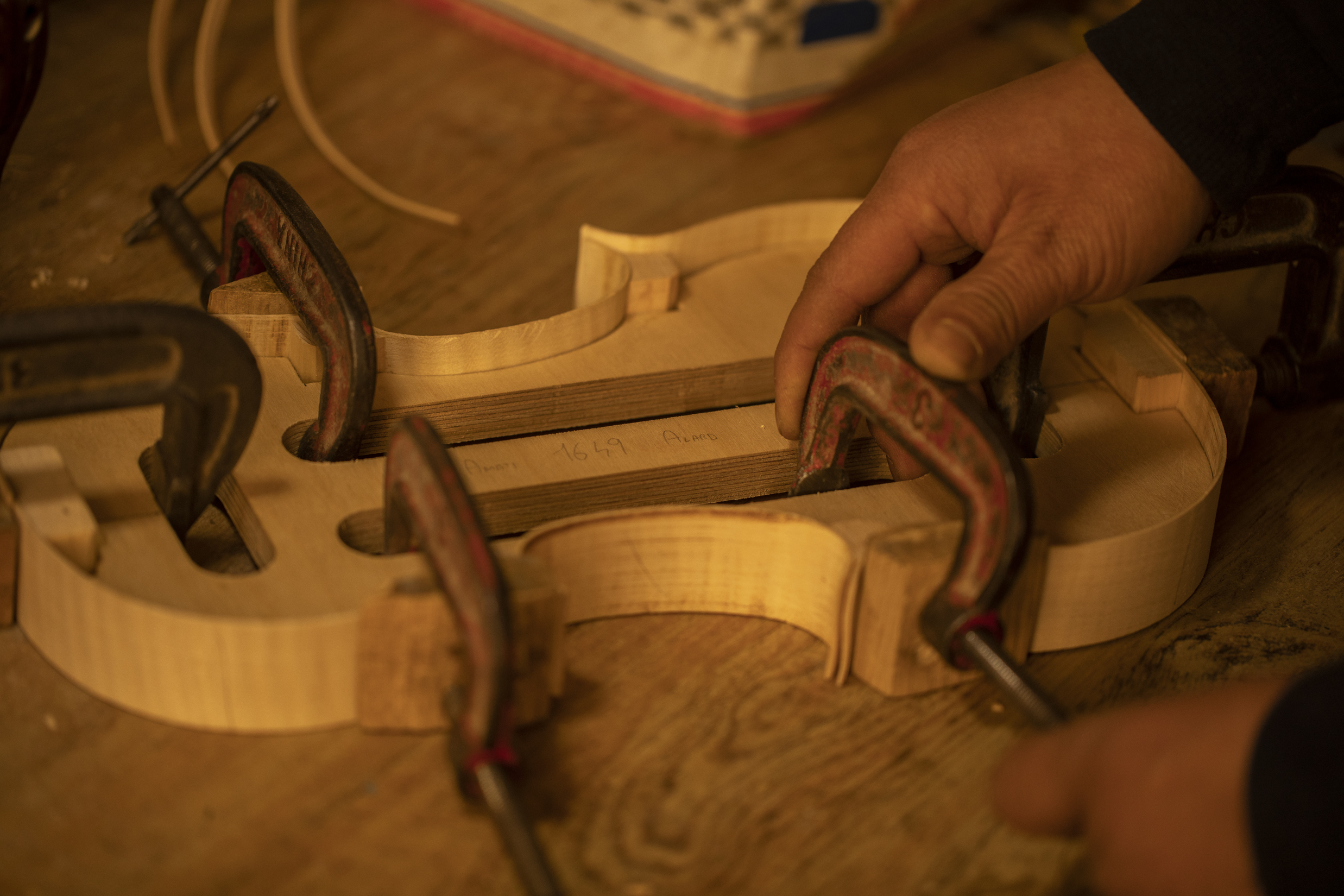
Cutting the f hole:
A well cut f hole serves for both acoustic and artistic purpose: the angle, length, width, location can all affect the way top plate vibrates. Most Stradivarius are made of symmetrical f holes, while the Guarnerius are known for the asymmetrical f hole.

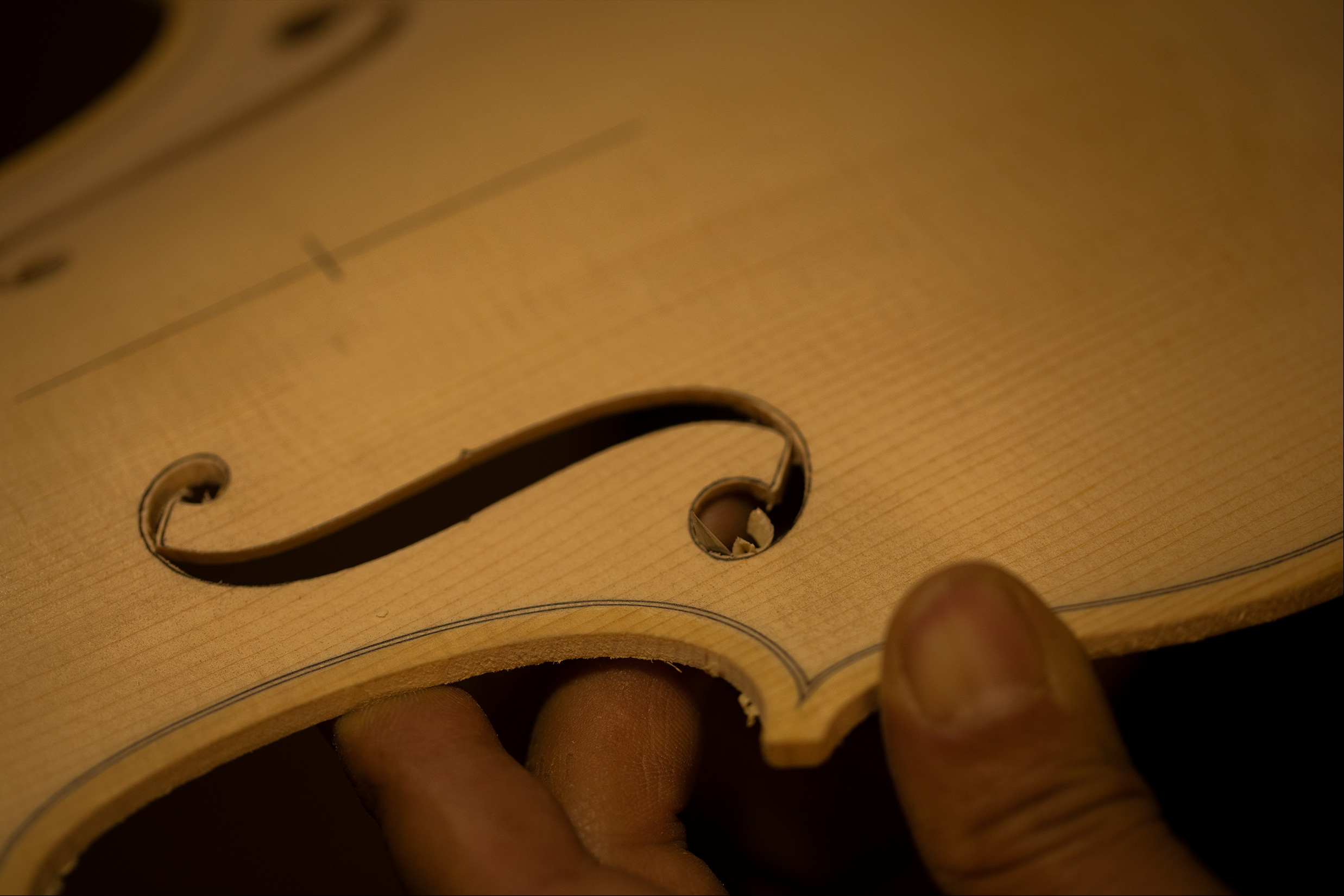
Purfling:
Purfling serves for two function, one is to protect the edge of the plate, as well shows the maker’s workmanship and making style. Only ebony, hand inlaid purfling used on our instruments, even the entry model.
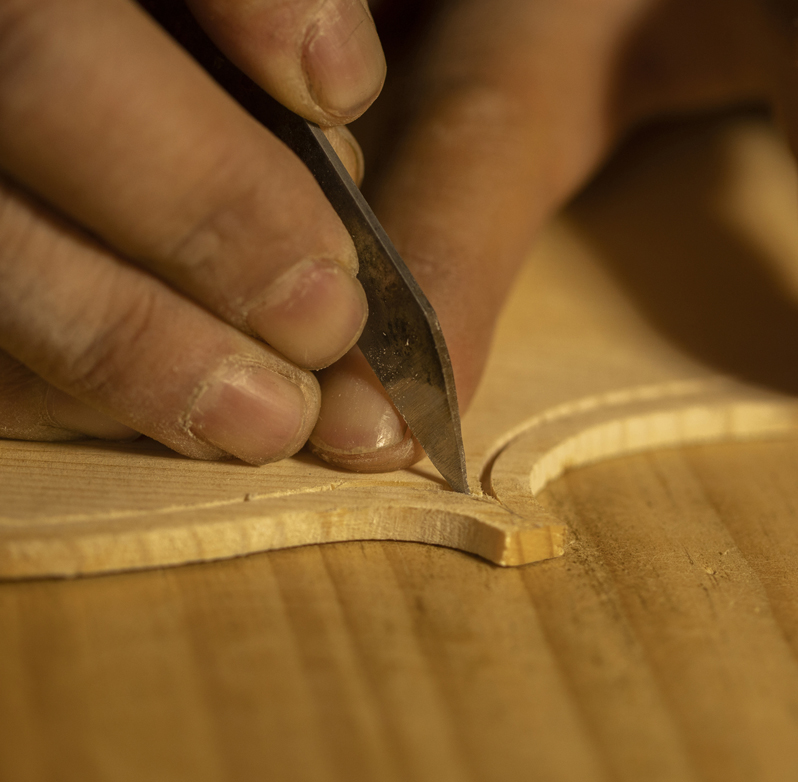
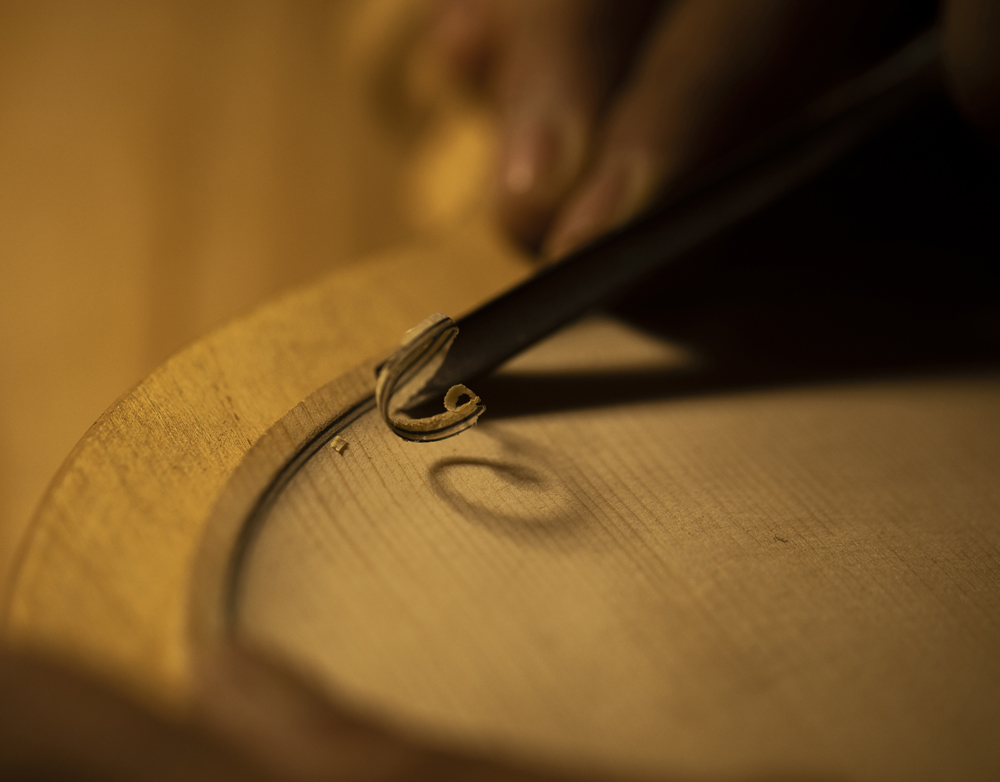
Scroll:
One important challenge in making an accurate copy of historically famous Strad and Guarneri, is to copy its original scroll is best possible detail. For experienced buyers/collectors, scroll is often the first thing to check, as it showcases the maker’s workmanship, and idea of constructing the instrument. For authenticity purpose, we carefully follow the original scroll on every Strad or Guarneri copy, hand carved it to present the beauty of original.
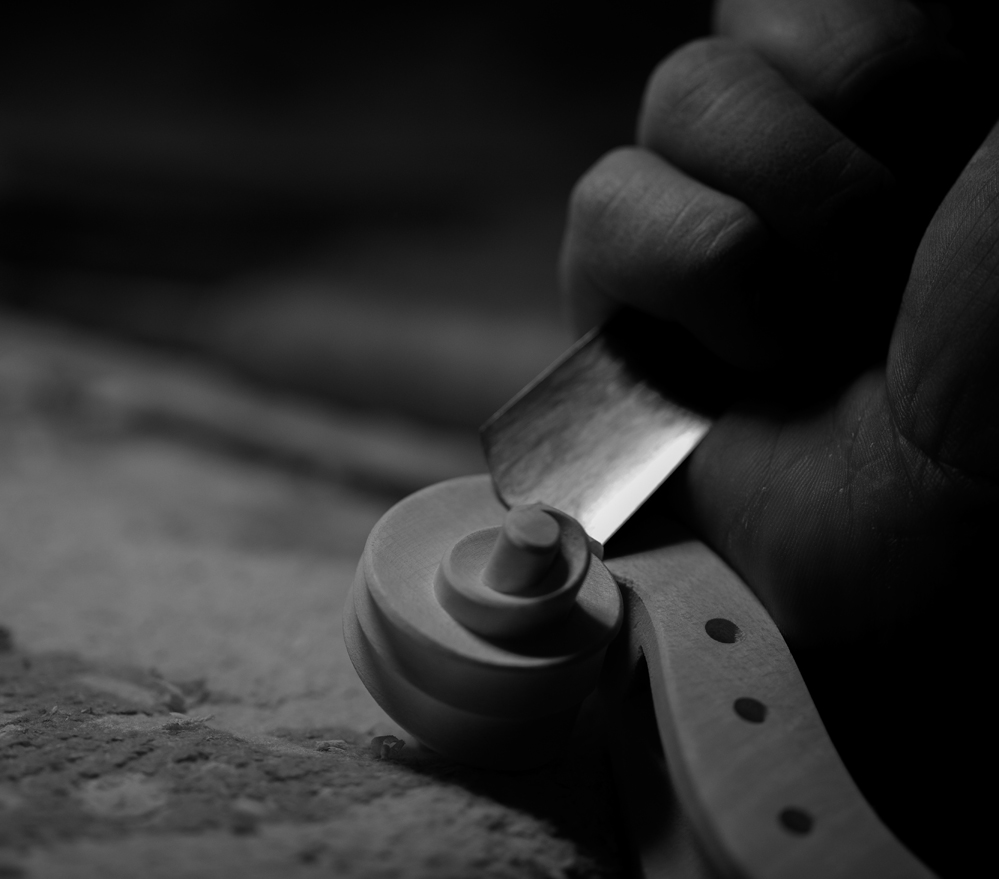

Putting it together, fingerboard and set up:
Set up is probably the easiest, also the most complex process in violin making: the neck projection, bridge placement ( which determines the string length ), after length, bridge thickness and height, choice of sound post and position, length of the post, will all affect the overall tone and playability. Best to have a luthier who can play the instrument efficiently, as well knowing the making process thoroughly, to perform the final set up/tone adjustment.
